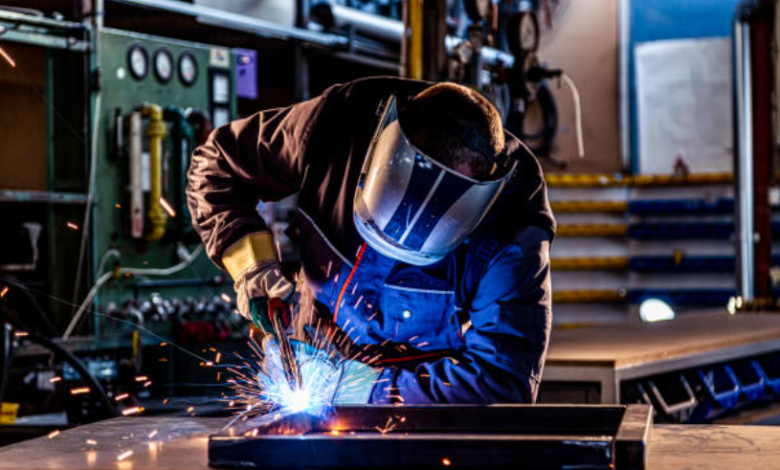The Versatile World of Argon Gas: From Lighting to Lab Use

Argon gas, a noble element with a multitude of uses, plays a crucial role in various industries due to its inert nature and unique properties. Argon is not only practical but also essential in fields ranging from lighting to laboratory applications. This article will delve into the significance and versatility of argon gas, touching upon its key uses and why it remains a staple element across diverse sectors.
Introduction to Argon Gas
Residing in group 18 of the periodic table, argon gas is colourless, odourless, and tasteless. Its most distinctive feature is its inertness, meaning it does not react with other elements under standard conditions. This attribute opens up a world of possibilities for its application in environments where non-reactivity is vital. Gleaned typically from the distillation of liquid air, argon gas is considered non-toxic and boasts impressive thermal insulation qualities, contributing to its widespread use.
The Role of Argon in Lighting
Within the lighting industry, the inclusion of argon gas is evident in the manufacturing of incandescent and fluorescent light bulbs. The presence of argon prevents the rapid degradation of the filament, effectively prolonging the bulb’s lifespan. By creating an environment where the tungsten filament is less prone to oxidation, argon gas ensures a stable and enhanced light output for various lighting fixtures.
Argon in Metal Fabrication
Moving from the glow of bulbs to the sparks of steelwork, argon gas serves a key function in the world of metal fabrication. Welders often employ argon as a shielding gas in processes such as gas metal arc welding (GMAW) and tungsten inert gas (TIG) welding. Shielding the weld area with argon protects the molten metal from the ambient air; this curtails contamination and facilitates the creation of strong, clean welds—vital for the integrity and safety of metal structures and components. Thus, the metal industry relies heavily on the stability argon offers to achieve top-notch results.
Argon’s Contributions to Medical and Surgical Fields
Argon gas imbues the medical arena with its benefits in a slightly different fashion. It is deployed during cryosurgery to destroy diseased tissue by freezing, and argon plasma coagulation is a technique for controlling bleeding in surgery or endoscopic procedures. By capitalizing on argon’s capacity to transfer energy and its inert qualities, healthcare professionals can perform procedures with higher precision, minimal tissue damage, and reduced risk of adverse reactions.
Argon in the Scientific Realm
Scientists and researchers utilise argon in scenarios where materials must be shielded from the outside air or reactive substances. Laboratories routinely incorporate argon gas into their practices, from providing an inert atmosphere for handling air-sensitive compounds to its role in a plethora of analytical techniques. Geologists and archaeologists use argon for argon-argon dating, a method that allows for the age determination of rocks and minerals, giving invaluable insights into the history of our planet and past civilisations.
Argon in the Electronics Industry
Argon gas proves its worth in the production and protection of sensitive electronic components. High-purity argon serves as an inert environment during the manufacturing process, particularly when dealing with items like semiconductor chips and transistors. In this sphere, any contamination could jeopardise the functionality of the devices, making argon’s non-reactive characteristics indispensable for maintaining the purity levels required by the electronics industry.
Uses of Argon in Windows and Insulation
The insulative properties of argon are not limited to thermal control in gases; they extend into the construction industry, particularly in the area of double-glazing windows. In these windows, argon gas fills the space between panes, thus reducing heat transfer and enhancing energy efficiency. Such an application is especially beneficial in temperate climates, leading to lower energy costs and improved comfort within residential and commercial buildings.
Argon in Food Preservation
Food preservation techniques also benefit from argon gas’s inertness. By displacing oxygen in packaging, argon inhibits the growth of bacteria and other degradative elements that spoil food. This practice extends the shelf-life of perishable products while maintaining their quality and freshness. Argon plays a silent yet pivotal role in keeping our food safe and consumable for longer durations.
See also: Strengthening Digital Growth with Advanced Marketing Techniques
Argon’s Role in Art Preservation
The conservation of historical artefacts and works of art is another area that taps into the protective aura of argon gas. Argon provides a chemically neutral environment that prevents the oxidation or other chemical reactions that could degrade precious artefacts. Museums and preservationists around the globe swear by argon to safeguard humanity’s cultural heritage.
Challenges in Argon Supply and Demand
Despite its passive nature, managing the supply and demand chain for argon can be challenging. Procuring argon necessitates the distillation of air, requiring substantial energy input. Moreover, as industries grow and the applications of argon expand, the demand can fluctuate, influencing not only the availability but also the pricing strategies within the marketplace.
Conclusion
In sum, argon’s role surpasses mere elemental significance and enters the realm of industrial necessity. Its inert properties foster innovation and ensure quality across a variety of applications often overlooked. The argon gas industry, therefore, sustains an integral part of the technological advancements and preservation efforts that define modern society. Future developments may witness the rise of new applications or more efficient methods of argon extraction, reinforcing its status as a truly versatile gas.
Embracing Argon’s Potential
From enhancing the enduring light bulb to securing seams in steel, and from safeguarding cutting-edge electronics to the quiet sentinel role it plays behind museum glass, argon gas manifests its worth through diversity and dependability. Its multifaceted nature beckons further exploration and practical use, with the certainty that argon will continue to be a paragon of versatility and reliability in the years to come.




